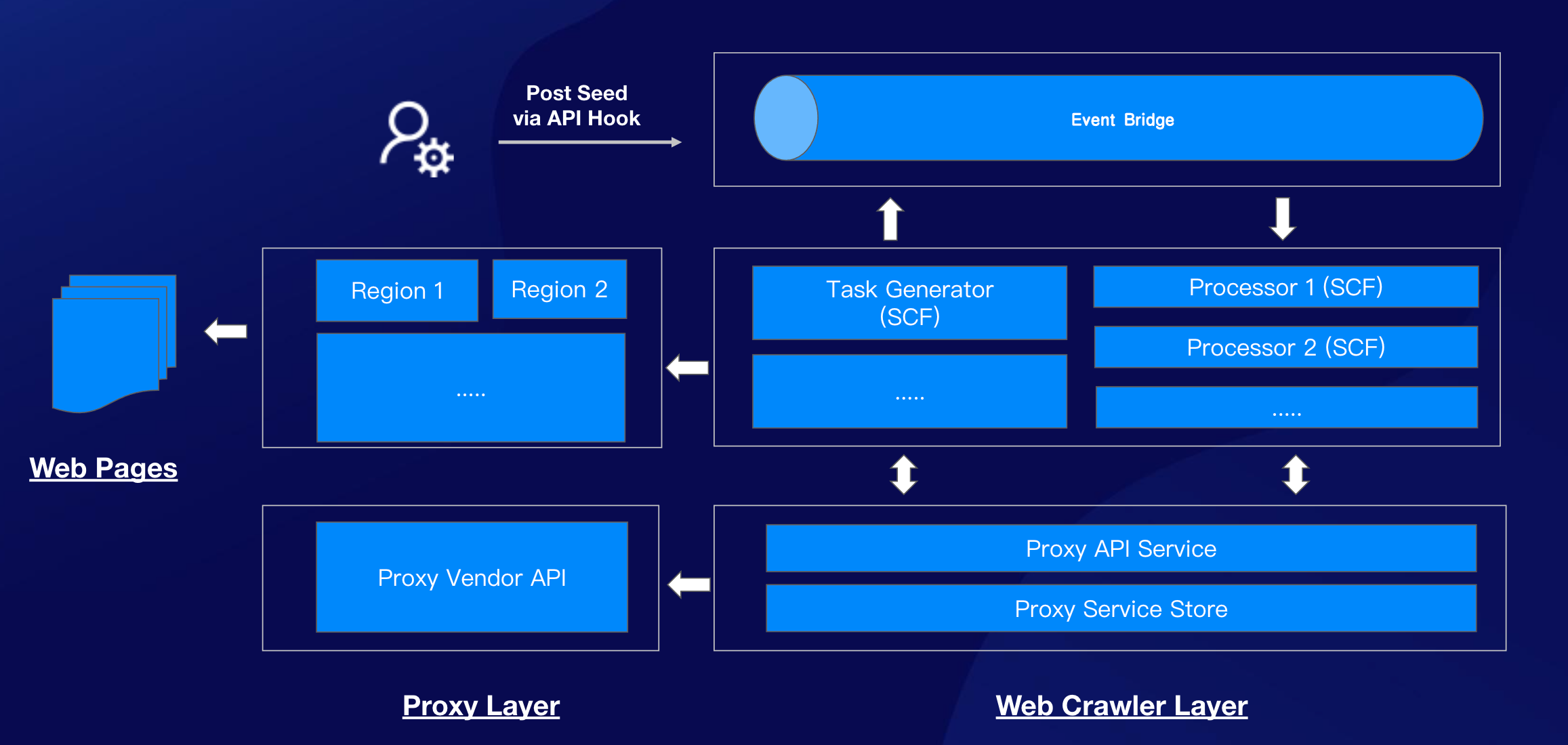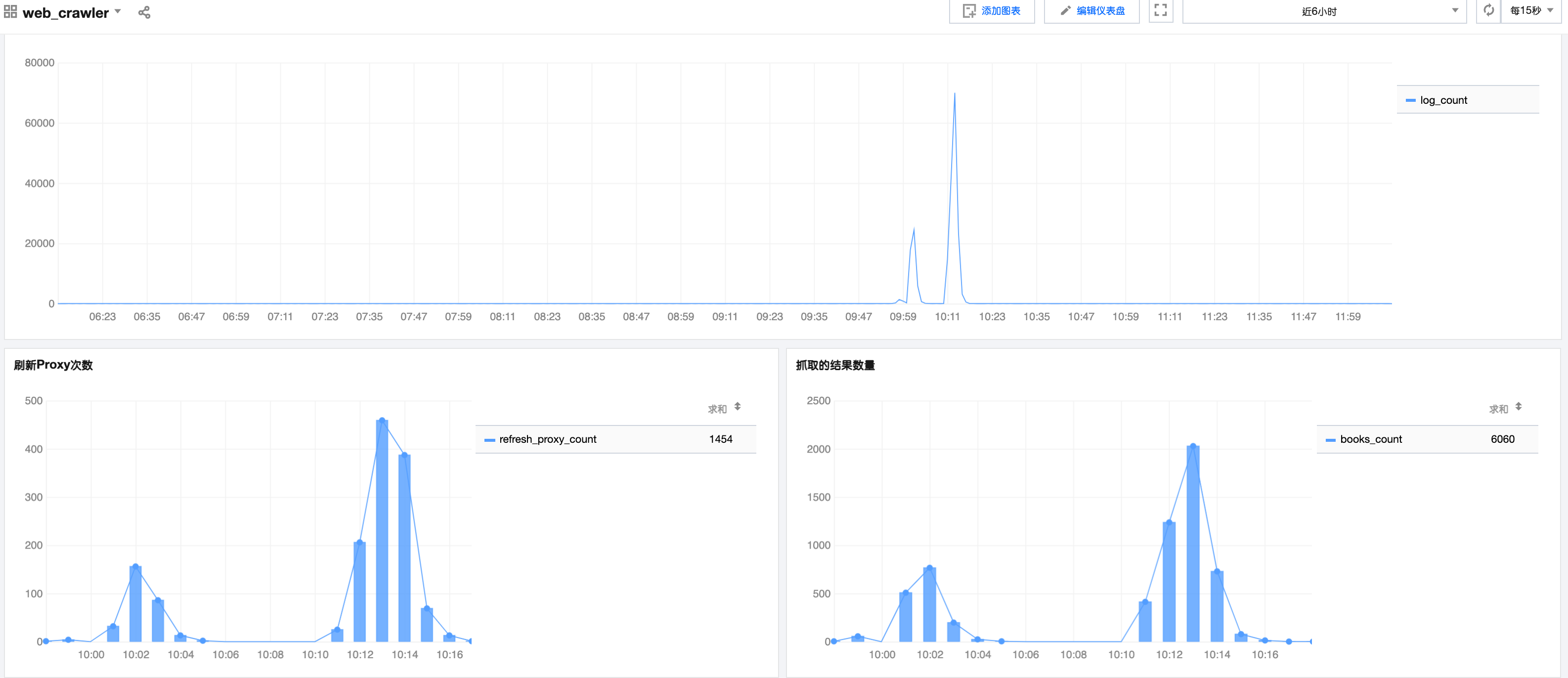A demo to implement web crawlers based on the concept of FaaS, it takes a event-driven approach by leverage the Event Bridge and SCF together.
!!Only for demo!! Please follow the rules of Robots.txt
with default SCF quota:
- Sample Index Page: https://www.thriftbooks.com/browse/#b.s=bestsellers-desc&b.p=1&b.pp=50&b.nr
- Sample Detail Page: https://www.thriftbooks.com/w/reminders-of-him_colleen-hoover/28978064#edition=60120699&idiq=46800918
- Loading the url of proxy API from environments
- Add the architecture diagram
- Deploy to SCF with
Serverless Framework - Routing the image download task to another SCF function
- Auto scaling as the requests increases
- High performance with Event-Driven
- Low maintenance cost
- Auto switch the proxy info
- Retry and timeout mechanism
- web_crawler: Python scripts using
BeautifulSoup4- access the link and parse html documents to desired results
- loading proxy info from remote proxy server
- Deploy to
SCFwith the origin Python runtime3.7.2
- proxy_server: A lightweight web server using Sanic framework
- Cosidering the rate limit and the quality of proxies, it required a web server to de-couple the complexity from
web_crawler - Only for demo purpose, the proxy info load from remote will cached into memory directly, suggest to use a shared store eg. Redis to share the data across SCF instances
- Deploy as Container image to
SCFdue to the compatibility issue withhttptools, which requires a dynamic so
- Cosidering the rate limit and the quality of proxies, it required a web server to de-couple the complexity from
- SCF: Runtime for
web_crawlerandproxy_server - Event Bridge: SCF Triggers, configured as a
web hook - API Gateway: Event Bridge Connectors, consider using the instance with high performance
Sample URL: https://service-yyyyyy-xxxx.gz.apigw.tencentcs.com/release/
Post the message to Event Bridge:
{
"ResourceLink": "https://www.thriftbooks.com/browse/#b.s=bestsellers-desc&b.p=1&b.pp=50&b.nr",
"TaskType": "VisitIndexPage",
"Data": {
"CurrentPageIndex": 1,
"MaxPageIndex": 2
}
}Run on local:
pyenv exec python3 local_web_crawler.pyRun tests:
./run_tests.shDebug:
./run_debug.shBuilding Container Images for Proxy Server:
docker build . -t xxxxx.tencentcloudcr.com/yyyyy/web_crawler_proxy:v0.1Run proxy server on local:
export PROXY_VENDOR_API="http://proxy.vendor.com/getip?xxxxx=yyyyy"
docker run -e PROXY_VENDOR_API=$PROXY_VENDOR_API --rm -it -p 9000:9000 xxxx.tencentcloudcr.com/yyyyyy/web_crawler_proxy:v0.1scf_web_crawler:
CHECK_PUBLIC_IP=False
EB_WEBHOOK=https://service-xxxx-yyy.gz.apigw.tencentcs.com/release/
ENV=prod
LOG_LEVEL=DEBUG
PROXY_ENABLED=True
PROXY_SERVER_BASE_URL=https://service-xxxxx-yyyyy.gz.apigw.tencentcs.com/releaseProxy Server:
PROXY_VENDOR_API=http://proxy.vendor.com/getip?xxxxx=yyyyypyenv exec pip3 install -r requirements.txt -t vendor/
